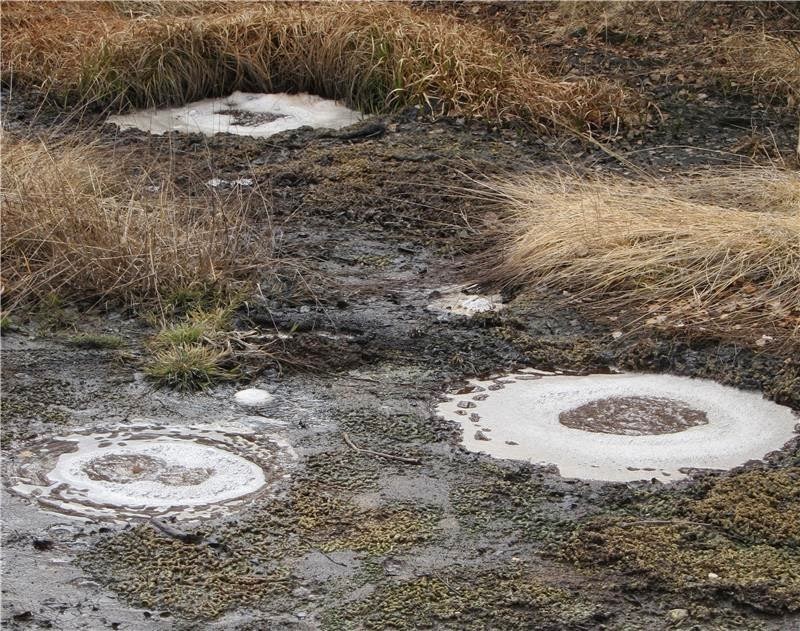
Researchers of the University Jena analyze the microbial community in volcanically active soils. In a mofette close to the Czech river Plesná in north-western Bohemia, the team working with Prof. Dr. Kirsten Küsel found numerous organisms that were thriving in this environment which seems to be so hostile to life.
The “Villa trans lacum” at the eastern shore of the Laacher See (lake) in the volcanic part of the Eifel — a rural landscape in Germany — was a highly dangerous place. In the 19th century the Jesuit order bought the abbey Maria Laach and built a villa at the shore of the lake. This is where the friars congregated to pray far away from everyday life. But numerous Jesuits paid with their lives for the religious beliefs in the villa. Between 1864 and 1888 17 of them died in the building — literally in their sleep.
“The monks possibly died of carbon dioxide emssions, coming up from the ground at the eastern shore of the lake in large quantities, which could, over time accumulate in the building,” as Prof. Dr. Kirsten Küsel of the Friedrich-Schiller Universiy Jena, explains the mysterious series of deaths. The lake is the crater of a volcano which last erupted about 12,000 years ago, reports the chair of Aquatic Geomicrobiology, “and up to now there are traces of volcanicity, which we regularly analyze on a yearly basis in an outdoor seminar in the degree course Biogeosciences.” Hints of volcanism are given by so-called mofettes. These are small openings in the ground, leaking carbon dioxide, which originates in the magma chambers of the earth’s mantel or the earth’s crust.
Small wonder then, that mofettes were places that are supposed to be very hostile to life. However, as the team of researchers working with Prof. Küsel was able to demonstrate in a new study: there is life even there, although hidden underground. In a mofette close to the Czech river Plesná in north-western Bohemia the researchers followed the path of the carbon dioxide along its last few meters through the ground up to the surface and found numerous organisms that were thriving in this environment which seems to be so hostile to life.
“Our investigation was aiming at examining microbial communities of a mofette and to find out if organisms profit from carbon dioxide emissions, and if so, which.” Felix Beulig from Küsels team says. “We could show, that the carbon dioxide degassing from the interior of the earth is being absorbed by a number of groups of microorganisms and is being transformed into biomass and in chemical bonds like methane and acetic acid. These in turn offer the basic food resource for other organisms in the mofette, and that is why the emitting carbon dioxide plays an important role in the carbon cycle of the soil,” the postgraduate student and first author of the study points out.
However, the new study shows that the biodiversity in a mofette is far less than that found in comparable soils. “But we are not dealing with a environment that is so hostile to life as seems to be the case above ground,” Kirsten Küsel sums up and reports, that there are habitually dead birds, mice and other small animals around mofettes, and only a few plants defy the “poisonous breath of the sleeping volcanos.”
Apart from these elementary findings about the carbon cycle in the soil, the research results of the Uni Jena can be useful in the long run to forecast the potential impact of unwanted degassing from underground carbon dioxide storage (“Carbon Capture and Storage”-technology) and to estimate possible future risks.
Reference:
Felix Beulig, Verena B Heuer, Denise M Akob, Bernhard Viehweger, Marcus Elvert, Martina Herrmann, Kai-Uwe Hinrichs, Kirsten Küsel. Carbon flow from volcanic CO2 into soil microbial communities of a wetland mofette. The ISME Journal, 2014; 9 (3): 746 DOI: 10.1038/ismej.2014.148
Note: The above story is based on materials provided by Friedrich Schiller University Jena.










